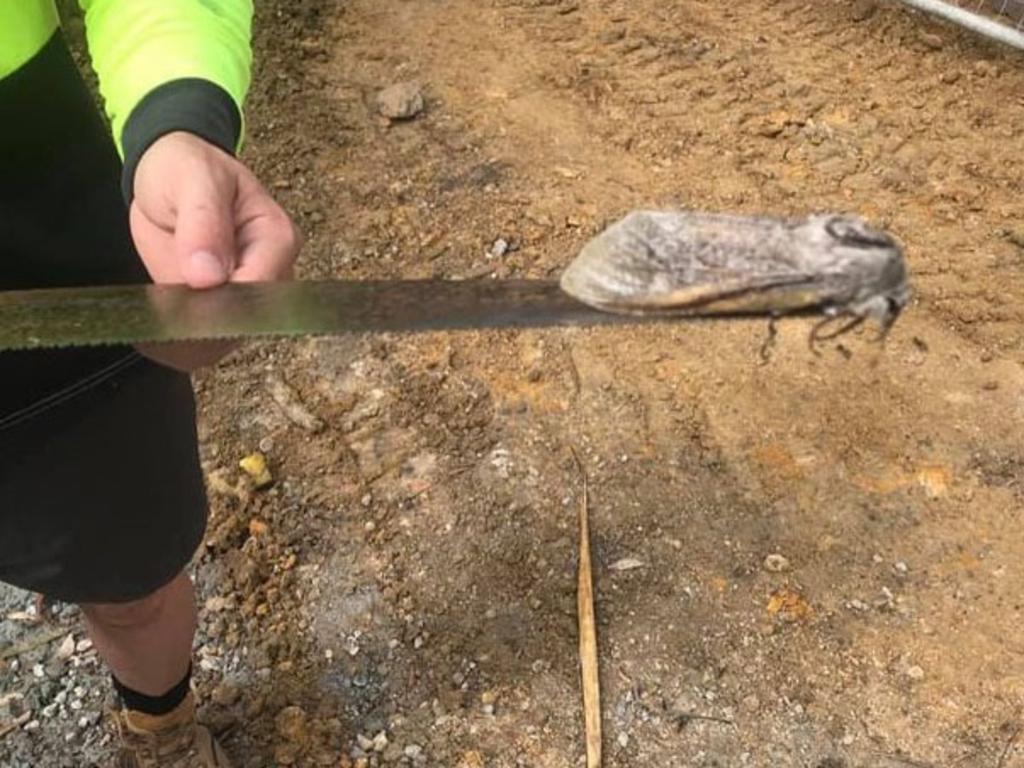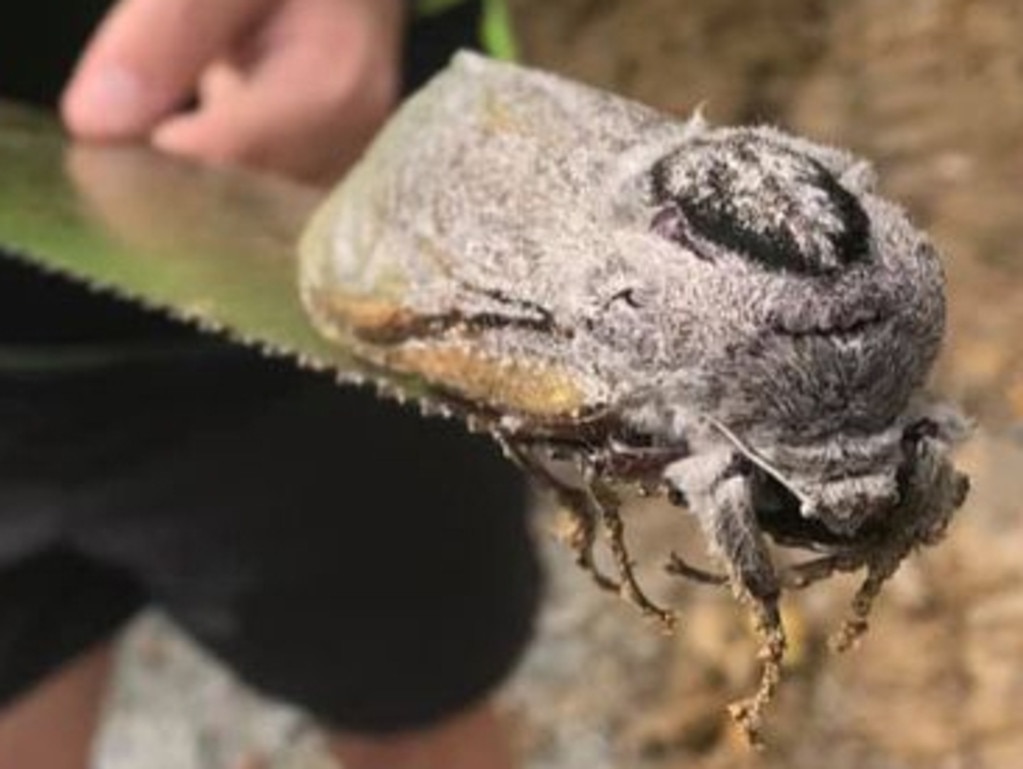A tradesman has shown off his gross discovery while working at a school construction site in Queensland.
The enormous moth was found while working on a new building that has an admin area and five classrooms at Mount Cotton State School, south of Brisbane in the Redlands.
Works have been under way for about 18 months.
The primary school, which has just more than 600 students, posted photos of the scary-looking creature on social media.
Principal Meagan Steward said it was an “amazing find” by the workers, but the staff and students weren’t surprised because the building was situated next to the edge of a rainforest and they had seen a range of creatures appear on the grounds.
Speaking on ABC Radio, she said it was as large as two fist sizes together and was placed back in the rainforest.
“We weren’t at school when the builders found the moth but they took some photos for us,” Ms Steward said.
“We have a (year) 4-5 composite class that live in that new building, and the teacher showed the students a picture of the giant moth and they used it as stimulus for a creative piece of writing.

The giant wood moth was discovered by a tradie who was working at the Mount Cotton State School. Picture: Facebook
“The class brainstormed what could happen and they decided on a giant moth invasion.
“They wrote some very creative and imaginative pieces of writing, including Mrs Wilson (their teacher) getting eaten by the moths.”
Queensland Museum’s head of entomology Dr Christine Lambkin identified the creature as a giant wood moth and said it was the world’s heaviest of the species.
It is commonly found between North Queensland and southern NSW and is grey coloured with a dark circular pattern on its thorax.

A giant moth the size of a rat was found by a tradie during the build of the Mt Cotton State School in Redland, Queensland. Picture: Mt Cotton State School Facebook.
Dr Lambkin said wood moths weighed up to 30g and the female wingspan reached up to 25cm, while the males were much smaller in size.
“They fly very, very poorly,” she said on radio.
“In most cases when the females emerge, they just crawl up a tree or stump of a fence post and wait for the males to find them.”
The entomologist said their caterpillars were witchetty grubs, known to be consumed by traditional Aboriginal people.
“This particular species is very interesting because we don‘t know what actually happens for the first year or so.,” Dr Lambkin said.
“The first thing we do know is they’re a grub that’s about 4cm long and appears on tree trunks, is black and white striped and burrows into eucalyptus trees, then spends a year or so eating away.”
She said the insects weren’t common but weren’t unusual to come across, especially at the end of summer.